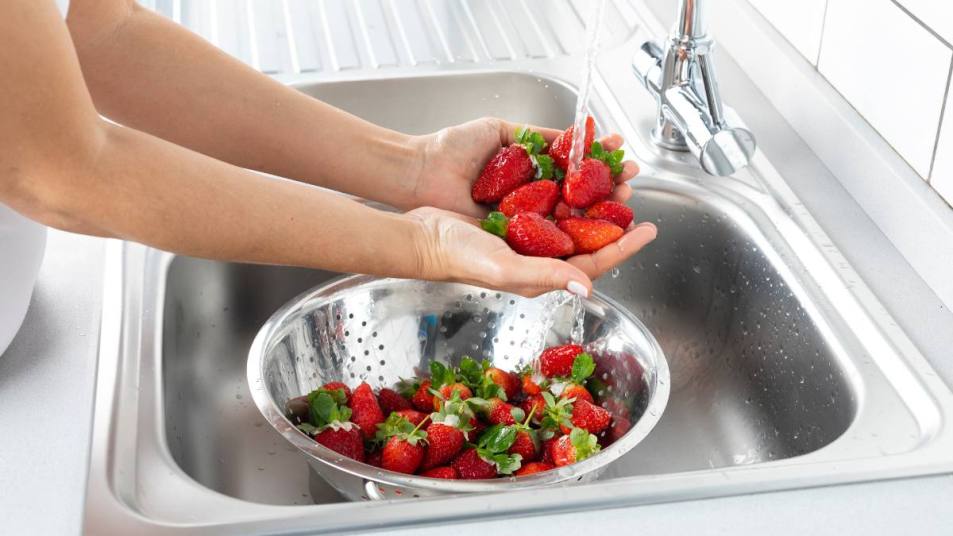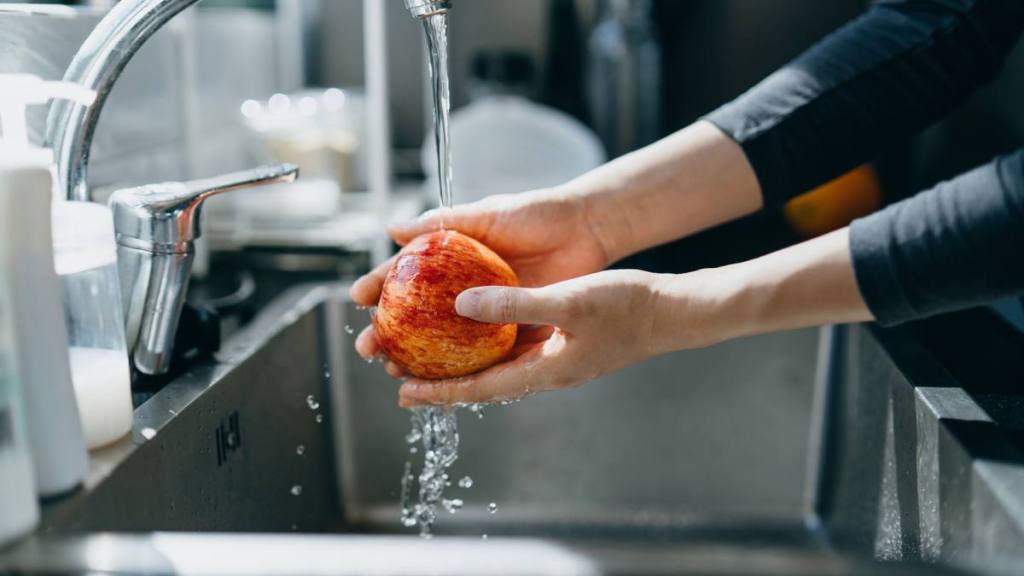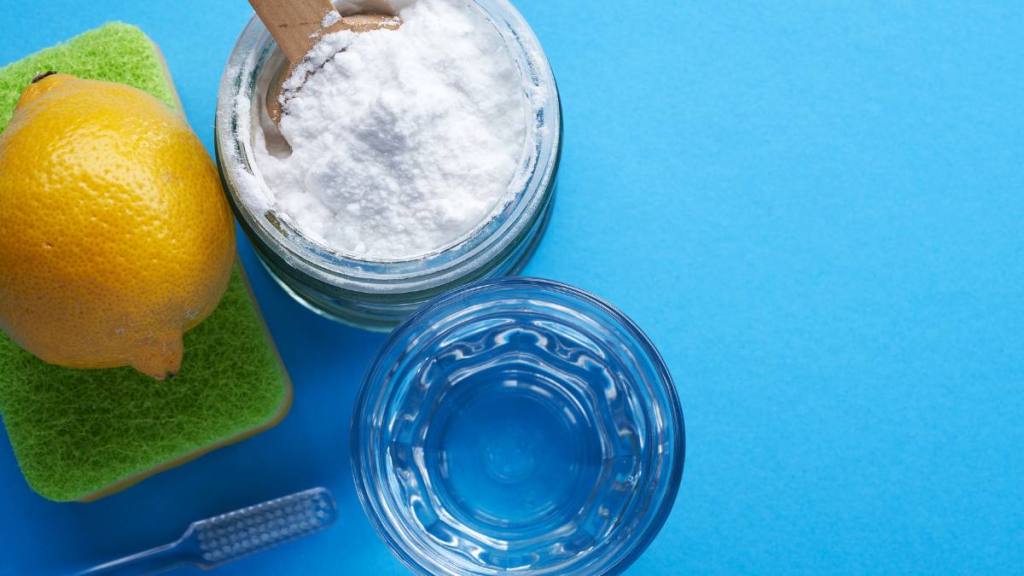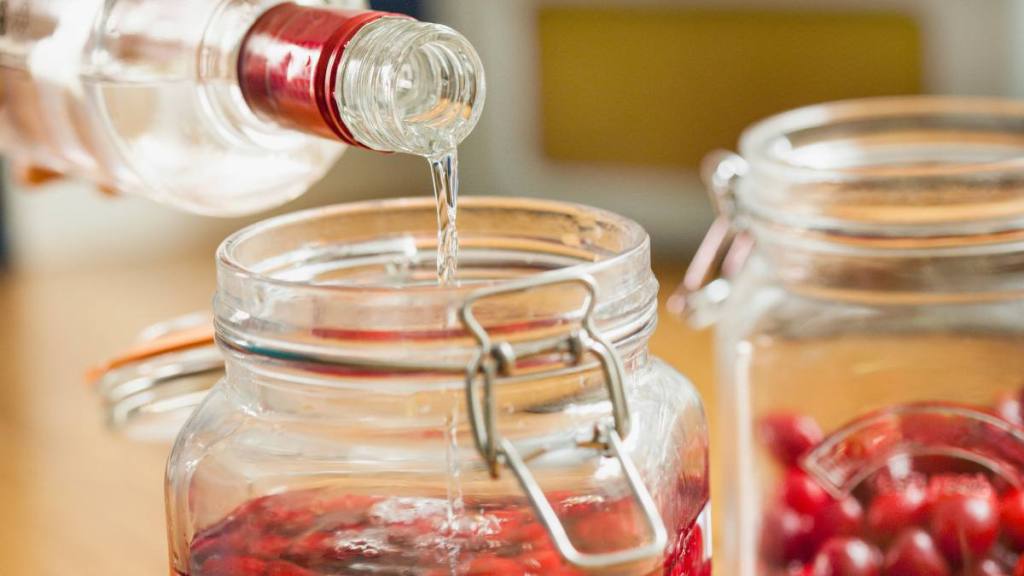How to Clean Fruit So It’s Safe to Eat + The One Thing You Should Always Skip
Skip the water and try these rinses instead

You already know to rinse your fruit before eating it, but with all the dos and don’ts flying at us from all Instagram reels, TikToks and more, it can be difficult to keep track of how and when to clean different kinds of fruit. To cut through the confusion and pinpoint the best practices proven to keep you and your family safe, we rounded up the top expert tips on how to clean fruit — so you can get past washing it and get to the fun part: eating it!
Why cleaning fruit is so important

Fruit can pick up bacteria and germs — including salmonella, E. coli, shigella, hepatitis and listeria — from soil or water. “Pesticides and fertilizers used during the growing process can also linger on the skin of the fruit,” says chef Amy Hand of TheSkillfulCook.com, adding that fruit may also come in contact with germs while it’s being shipped, transported and stocked. “That’s why washing fruit is a no-brainer.”
And while rinsing fruit in water is better than nothing because it will help rid it of most loose dirt and many bacteria associated with food-borne illnesses, but there are better, more comprehensive methods, says food safety expert Bex Smith, RD, of BexsKitchen.com. “Some chemicals or contaminants just won’t wash off that easily and might need a little more oomph to eliminate them.”
How to clean fruit : 8 easy ways that work for all fruits
Luckily, there are plenty of effective methods to rinse fruit (and veggies, too!) that will ensure they’re safer to eat. And while most fruits will do fine with a simple rinse of one of the below options, some may take a little more elbow grease. “Apples and pears have a waxy layer applied to help preserve them and make them look more appealing,” Hand points out. “Scrubbing them gently with a soft-bristle brush and your rinse of choice should remove this easily.” Cantaloupe, honeydew and other melons with non-smooth rinds, as well as citrus fruits with bumpy outer layers of skin, can also benefit from a scrub. Adds Hand, “It’s important to scrub these, even though you’re not eating the outer layer — that’s because any dirt, germs and bacteria on the surface can still get onto the part you eat when you slice into it.”
Just read on for the easy options and choose the one you can grab fastest.
1. How to clean fruit with white vinegar
Vinegar is considered the gold standard when it comes to rinsing fruit because it contains antibacterial properties — not only does it rinse off contaminants, it also kills those that try to stick behind, according to food safety expert Dan Gallagher, RD, of AegleNutrition.com. His simple how-to: Combine three parts water to one part white vinegar and let the fruit soak in the mixture for up to 15 minutes; rinse with water, and either eat right away or let the fruit dry completely before placing it in the fridge.
Even better? Rinsing fruit in white vinegar also turns out to be the best method for keeping fruit fresh longer, according to chef Jerry James Stone, who tested the method. In fact, strawberries cleaned in white vinegar lasted weeks longer than those rinsed with plain water. That’s because white vinegar helps remove bacteria on the strawberries that speed ripening.
Just check out his video here:
2. With lemon juice
This method works very much like white vinegar: “Lemon juice has antibacterial properties, too, and its natural acidity helps break down certain residues on fruit,” says Smith. To do: Mix one part lemon juice with three parts water. Gently rub the solution on the fruit’s surface, then rinse thoroughly.
3. How to clean fruit with grapefruit seed extract
“This oil boasts both natural antibacterial and antifungal properties, which can help cut down on mold,” explains Smith. To do: Add 2-3 drops of the extract to 2 cups of water and soak fruit for 15 minutes. Just make sure to rinse the fruit well to remove any remaining extract.
4. With olive oil
Some pesticides are oil-based, which makes them lipophilic, meaning they’re attracted to other oils. “That’s what makes this rinse so effective,” says Smith. “The olive oil bonds with and removes the pesticides.” To do: Mix one part olive oil with two parts water. Gently rub the mixture on the fruit’s surface, then rinse thoroughly.
5. How to clean fruit with cornstarch or baking soda paste

These pantry staples are especially great for removing impurities from fruit or berries with non-smooth surfaces, like strawberries, Smith explains. “The grains of the cornstarch or baking soda get into the crevices of fruit with bumpy rinds or the little grooves on berries, dislodging any grime that may be hiding out there.” To do: Mix 2 Tbs. cornstarch or baking soda with enough water until it forms a paste. Use a paper towel to gently scrub the fruit with the paste, and then rinse thoroughly.
6. With activated charcoal
Known for its ability to absorb certain toxins, activated charcoal can “soak up” many common pesticides, herbicides and fertilizers. Says Smith, “Just be sure to use a food-grade variety found in drugstores and most grocery stores.” To do: Mix a small amount of charcoal with water to create a paste. Apply the paste to the fruit’s surface, allow it to sit for a few minutes, then rinse thoroughly.
7. How to clean fruit with alcohol

Like white vinegar and lemon juice, alcohol — plain vodka or even rubbing alcohol — will both rinse and kill bacteria hiding on the surface of your fruit. To do: Mix one part alcohol to three parts water. Soak fruit in the mixture for 15 minutes, then rinse thoroughly.
8. With turmeric
“This spice can help scrub fruits clean, and it also boasts powerful antibacterial properties,” says Smith. The downside is turmeric can be a little more expensive than other options. To do: Create a paste using 2-3 Tbs. turmeric and water. Apply the paste to the fruit’s surface using a paper towel, let it sit for a few minutes so it can kill any bacteria it comes into contact with, then rinse well.
Prefer store-bought solutions to clean fruit? Try these
1. Premade washes
These come in spray bottles and work the same way as the vinegar/lemon juice/alcohol methods above. Two options: Veggie Wash, (Buy from Amazon, $15.82) or Rosey Fruit and Vegetable Wash (Buy from Thrive Market, $5.49).
2. Electrolysis devices
These rechargeable devices went viral this year on TikTok and Instagram. Simply drop the device into a bowl of water along with the fruit you need cleaned. It works by breaking down water molecules (H2O) into OH- and H+ molecules. The OH- particles will then bond with and destroy chemicals found on the surface of fruits and veggies.
Two options: Joiena Fruit and Vegetable Cleaner (Buy from Amazon,$29.99) or Walmeck Multifunctional Portable Mini Fruit Vegetable Cleaning Machine (Buy from Walmart, $31.03)
To watch a brief demonstration of how it works, check out this YouTube video:
What *not* to clean your fruit with?
Soap! While it’s obviously food-safe for washing dishes, it can impact the flavor of certain fruits and isn’t recommended, says Hand.
For more food-safe + antibacterial cleaning hacks, click through the links below!
Your Toothbrush Is Teeming With Bacteria: Dentists Share How to Clean It
How To Clean a Wooden Cutting Board + the Salt Trick That Wipes Out Stubborn Stains
How To Clean Your Ice Maker So Your Ice Cubes Stop Giving Your Drinks an Off Taste

















